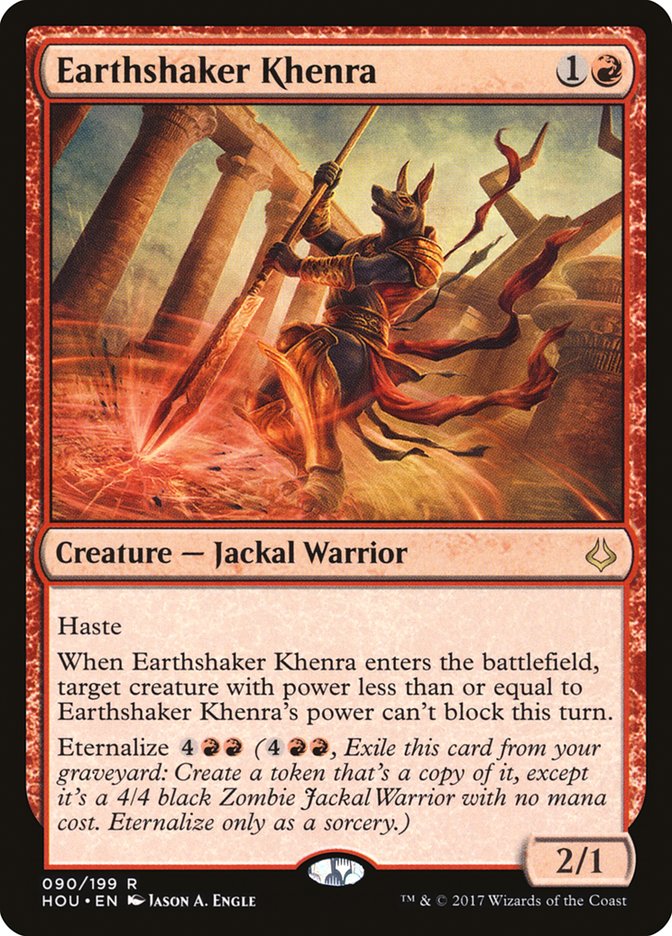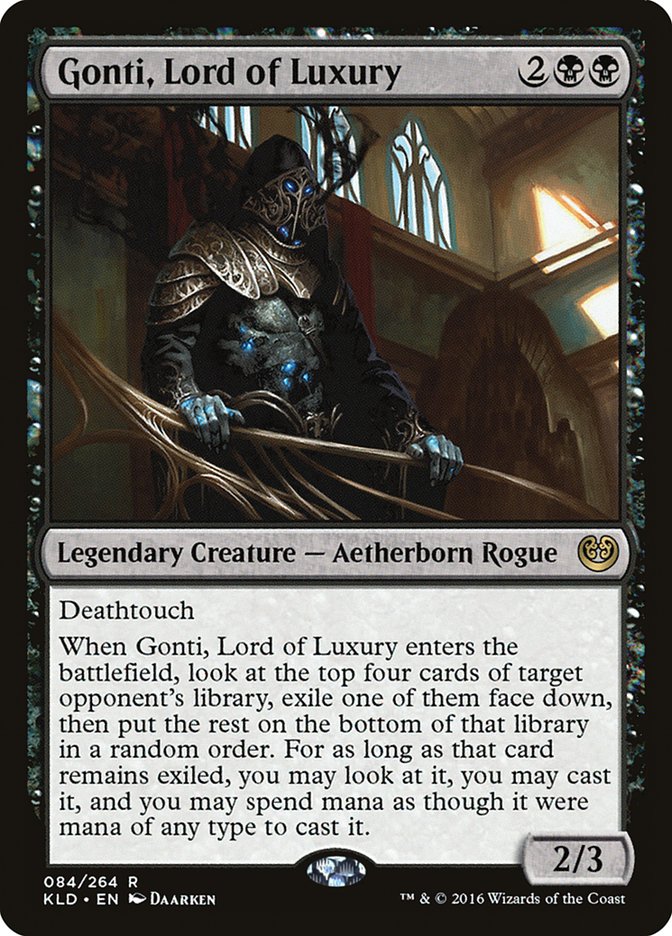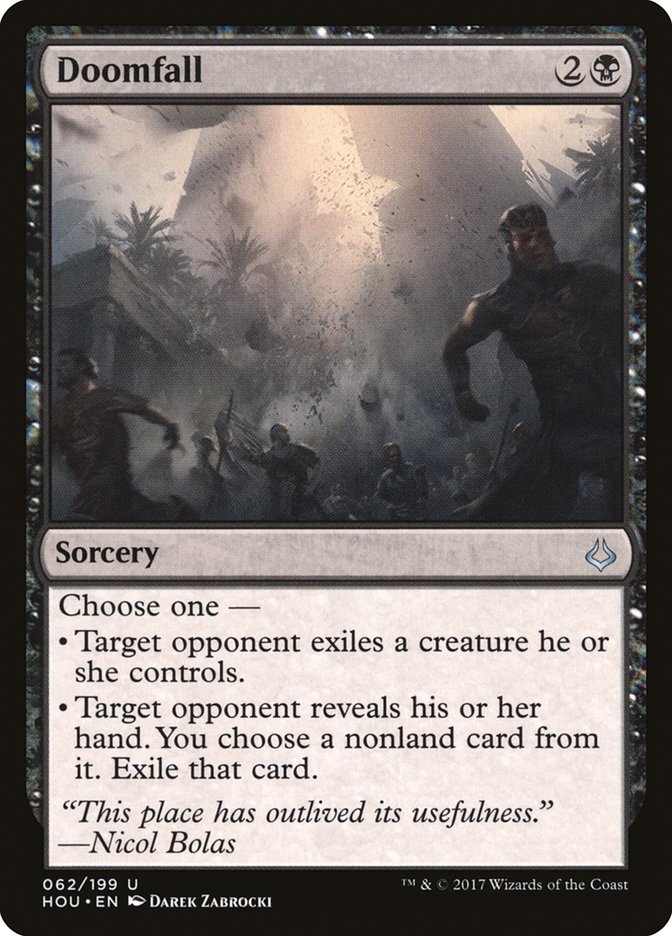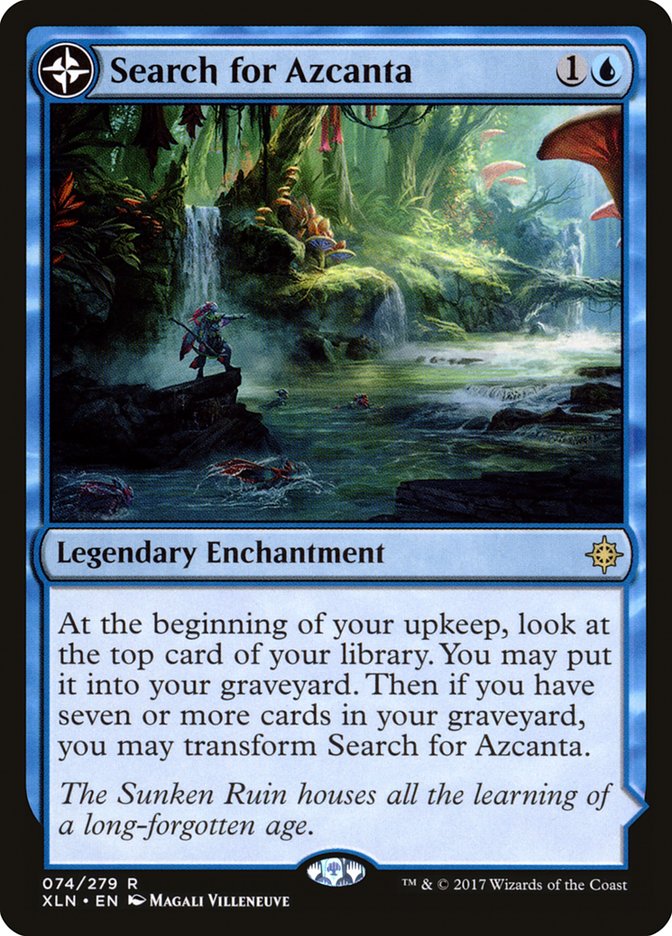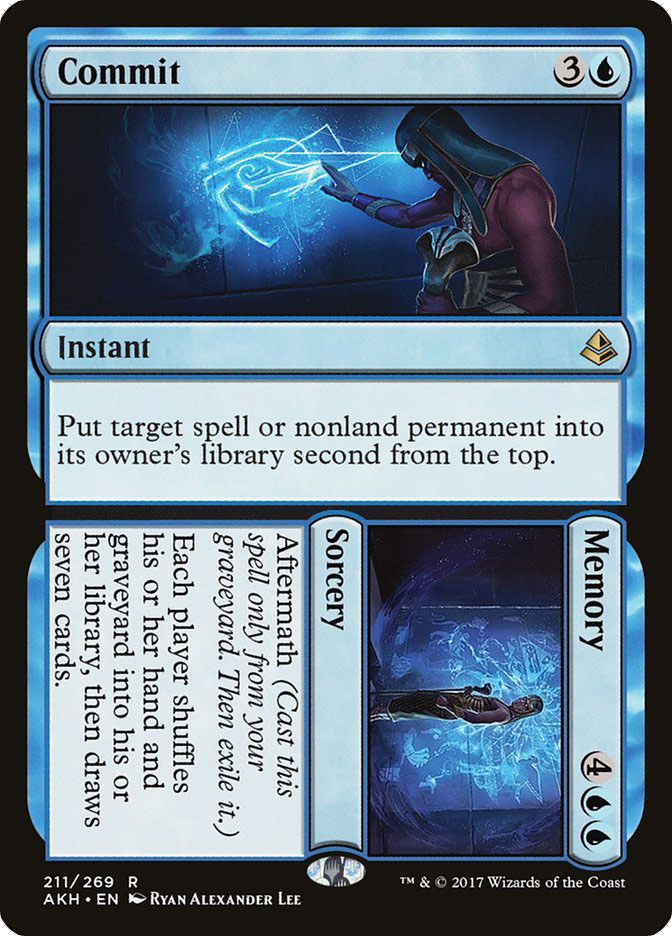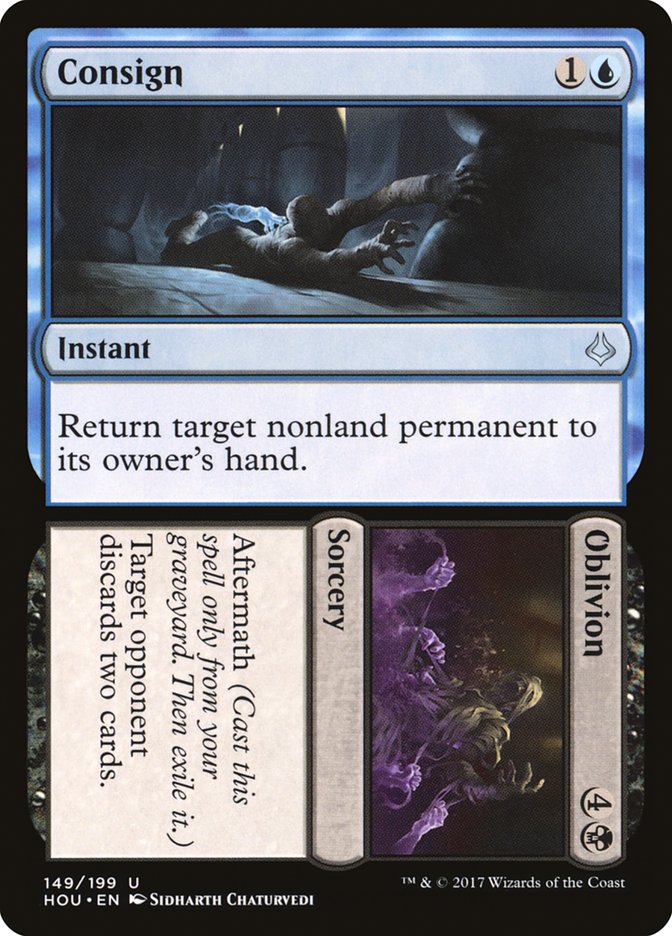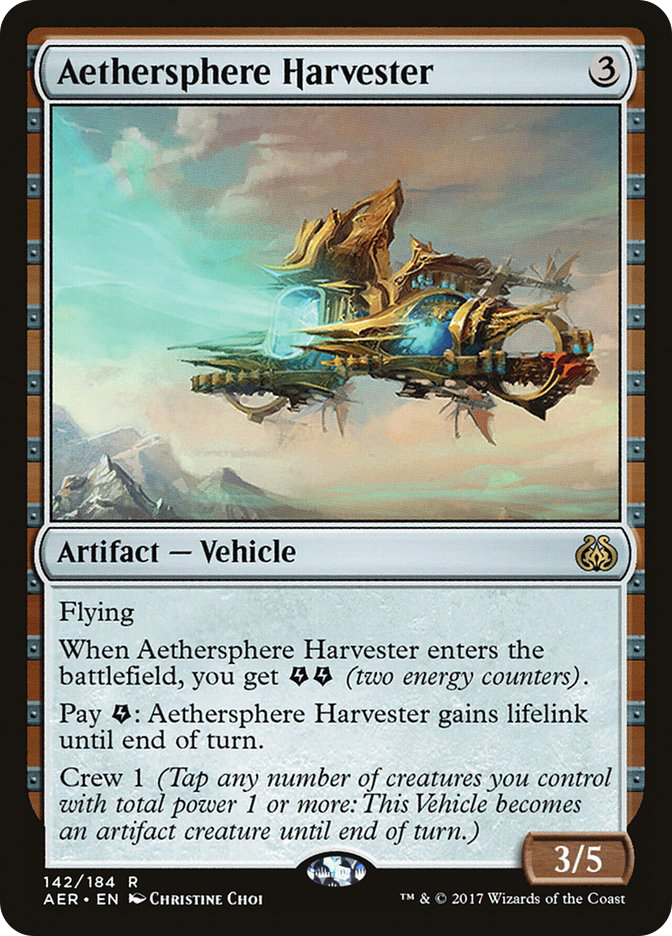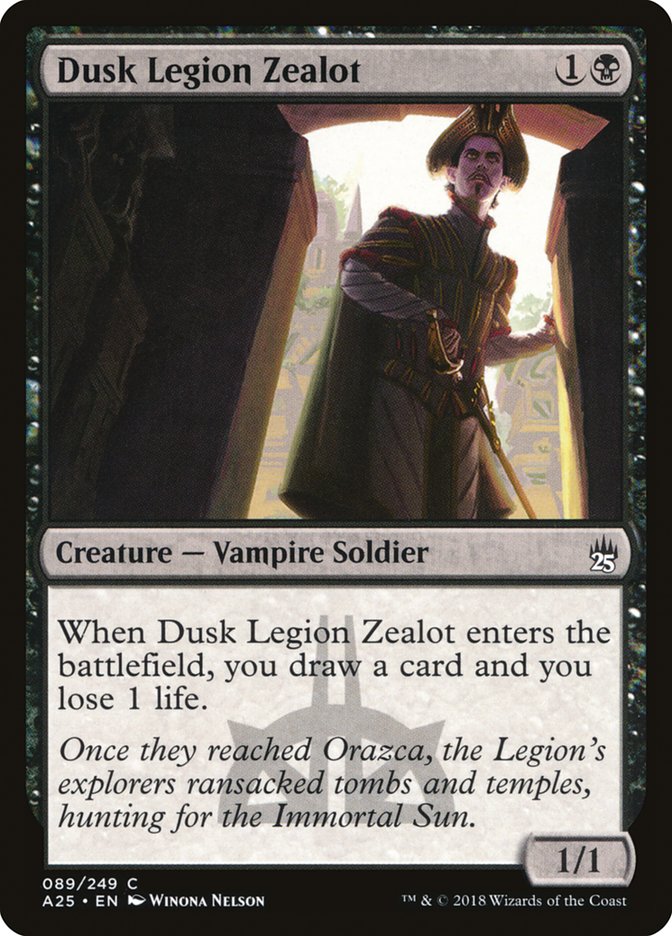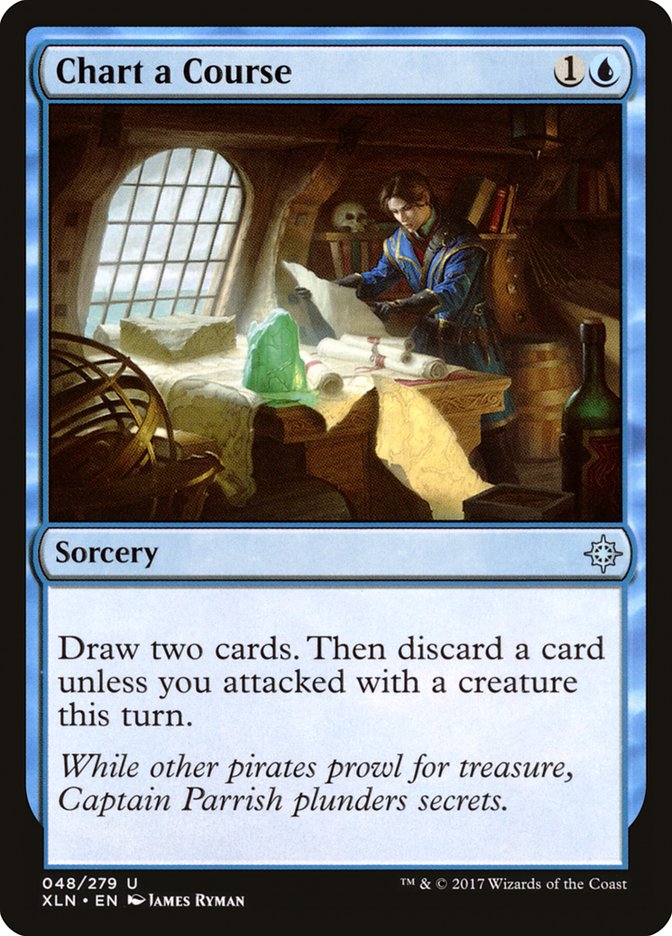Last week, Owen Turtenwald compared The Scarab God to Jace, the Mind Sculptor; Deceiver Exarch / Splinter Twin combo; Elspeth, Sun’s Champion; and even a time-traveling Rhino. He was extremely animated about just how powerful this card is, and I still don’t think he even scratched the surface on how absolutely metagame-warping this piece of cardboard actually is.
In fact, The Scarab God is the metagame. The more I play Standard, the more I believe it’s an egregious error not to put this card in your deck, at least until people start respecting just how powerful it actually is.
It seems difficult to believe that an entire format can be held hostage by one creature that costs an absurd amount of mana to be efficient, but that’s the world we live in. There’s just no cheap way to beat a resolved Scarab God, so an opponent almost always needs to use their entire turn to deal with it. Since the card wins the game all by itself, the rest of the deck has enough interaction built into it not to get too punished for this exchange.
The main reason for The Scarab God’s dominance is that both blue and black have extremely efficient spells for the early game. Fatal Push, Duress, Negate, and Essence Scatter make it difficult to sequence in a way that exploits the exchange of the casting and killing of The Scarab God, especially when cast on Turn 7 with Negate backup.
Standard is in dire need of a card like Celestial Purge to achieve a more balanced metagame, as this would punish players more for tapping out or tapping low for The Scarab God. Until then, we just have to accept the fact that there’s nothing better to play.
Standard in its current iteration is still young. We’ve had few events to flesh out everything, and until recently, the biggest threat was actually Mono-Red Aggro. Since Grand Prix Memphis there’s been a drastic shift in the metagame, as most of the red-based aggressive decks have almost vanished from the Magic Online queues.
The reason for this expulsion is simple – The Scarab God decks caught up. They figured out how to beat Mono-Red and now the queues are littered with U/B Control, U/B Midrange, and Grixis Energy. All three use the same late-game engine. All three do better than the rest of the field.
I honestly don’t know which one of the three decks are the best. It’s difficult to know at this point when all the games end the same way: someone untaps with The Scarab God after tons of dust has finally settled. It’s all that matters, so that’s what all of these decks play to. The only reason for all the unique variations is people trying every path to get there in an attempt to find the best route.
We should see more unified builds in the near future, and potentially even U/B Midrange or Grixis Energy getting pushed out of the metagame due to a “survival of the fittest” situation. Until then, it’s critical to understand the differences in each iteration to clear up the blurry lines between these midrange strategies.
I’m going to mostly focus on these midrange decks today, as I’m not comfortable yet voicing strong opinions about U/B Control. By next week that should change, as I plan to play five to ten Leagues with the deck by then.
Midrange Amalgamations
I’m under the impression that the reason why these lines became so blurred is that many consider Grixis Energy and U/B Midrange to share a foundation. It’s easy to assume this, as both play so many of the same cards, but that doesn’t make them want to function the same way on their path to winning with The Scarab God.
Grixis Energy has better removal, and thus plays more of it. Given this higher density of removal, the deck then needs the rest of its spells to be higher-impact. Chandra, Torch of Defiance is the perfect card for this deck, as it can act as a removal spell but also generate card advantage later in the game.
It’s also a target for Vraska’s Contempt, which is surprisingly important for the strategy. Grixis Energy doesn’t have as much built-in card advantage, so it needs a high density of cards that must be killed by Vraska’s Contempt in order to lower the opponent’s density of answers to The Scarab God. This means anyone playing Gonti, Lord of Luxury in Grixis Energy is doing something wrong.
Gonti, Lord of Luxury is easily my favorite card in Standard. I don’t know why, but I just love it. This infatuation has led to me playing with this card way more than most, and what I’ve learned is that Gonti, Lord of Luxury is a perfect card in a deck that wants to skimp on creature removal and sacrifices power to generate two-for-ones instead: exactly what U/B Midrange is.
Grixis Energy just doesn’t need this effect, since it already runs an abundance of removal and powerful effects. Grixis Energy wants to play a high density of removal to facilitate Chandra, Torch of Defiance. This means it’s less likely to want to play countermagic, as there’s almost always going to be something worth answering the turn after casting the powerful planeswalker.
You also don’t want to reveal counterspells with your Chandra, Torch of Defiance. By extension, the deck doesn’t want to lean too heavily on Torrential Gearhulk, thus not needing many options for the powerful six-drop. Grixis Energy instead wants an even higher density of cards that can help catch back up to run away with the game. The best card I’ve found for that is Doomfall.
Doomfall cleans up many of the format’s biggest issues, yet only works in a deck that plays a high density of removal spells to guarantee exiling those premium threats. It also has a second mode for when an opponent isn’t casting enough threats or when it’s revealed by Chandra, Torch of Defiance. That’s why this card isn’t good in U/B Midrange, since there are usually one or two creatures on each side of the battlefield in the mid-game, when the deck is most interested in generating card advantage in a way that always takes up most of the turn’s mana.
With the help of Petr Sochurek, I’ve found myself playing this 75 of Grixis Energy.
Creatures (13)
Planeswalkers (3)
Lands (26)
Spells (18)
- 4 Magma Spray
- 4 Harnessed Lightning
- 2 Glimmer of Genius
- 3 Doomfall
- 4 Vraska's Contempt
- 1 Search for Azcanta
Sideboard

There are a few more things to discuss before moving over to U/B Midrange. First is the land count. Last weekend Owen discussed wanting to play 27 lands, and a few others have started to follow suit. I think it’s a mistake. He was, however, correct in insisting on four copies of The Scarab God, and I only see this changing once there are more decks playing four Ixalan’s Binding in the maindeck. For now, I see no reason to not play four of this card.
But 27 lands? I’d much rather turn a land into a Search for Azcanta. It helps filtering in the early turns, yet can became a serious threat in the late-game, as it can find both removal and threats with how many copies of Chandra, Torch of Defiance it runs. It also sometimes dumps creatures into the graveyard for The Scarab God, something this deck doesn’t get access to, given it’s not running Champion of Wits.
The last thing worth discussing is opting to not play Commit // Memory. I loved this card in U/B Midrange, but Grixis Energy just doesn’t make the card good enough without having Gonti, Lord of Luxury or Field of Ruin. Instead, this deck better uses Consign // Oblivion as its answer to problematic enchantments. I don’t mind only having access to a single way to interact with a resolved enchantment for now, but I’ll change my tune when cards like Ixalan’s Binding and Profane Procession become much more popular.
U/B Midrange
Moving on to U/B Midrange, there have been a lot of interesting decisions about how to build it. For starters, people are starting to try cards like Dusk Legion Zealot, Aethersphere Harvester, and even high densities of counterspells in an attempt to not play Gifted Aetherborn.
I’ll be the first to say that Gifted Aetherborn isn’t great in this deck and is mostly there to create an early battlefield position against Mono-Red Aggro and other aggressive decks. It’s so often sideboarded out that I also have looked for replacements.
In all honesty, my lack of conviction on the correct distribution of two-drops was one of the reasons why I took a step back and started working on Grixis Energy. I even ran back my same list in last weekend’s MOCS, just because. I didn’t have strong beliefs that I was doing the correct thing; I just simply knew what to do with the list, so I played it.
I won’t say that Gifted Aetherborn or Walking Ballista is 100% correct in this deck, but I will go on record professing my disdain for cards like Dusk Legion Zealot and Aethersphere Harvester as worthy replacements.
Let’s discuss the Vehicle first, since that one’s easy. This deck doesn’t have one-drop creatures. That’s all that has to be said. Vehicles are bad in decks that don’t properly crew them, and this deck doesn’t. You can’t justify playing Vehicles in decks just because they have creatures with weak bodies like Dusk Legion Zealot. What is this, Limited?
Aethersphere Harvester isn’t good in a deck with this many spells, especially when the deck is always going to win with The Scarab God anyway. You’ll run into too many situations where you have it plus an abundance of noncreature spells like Negate, removal, or card advantage.
Now, on to Dusk Legion Zealot and why it’s a worse Chart a Course. I get that it’s a way to put something on the battlefield and sometimes that’s relevant. Sadly, though, I don’t think it’s as relevant as people think it is. It’s great when it trades with something out of Mono-Red Aggro, but is dealing U/B Control some amount of damage with it substantial?
I consider it not to be better than seeing two cards for the same amount of mana and sometimes discarding a Champion of Wits or a creature to return with Liliana, Death’s Majesty. It’s also nice to draw two cards in a deck that wants to never miss a land drop. I just feel that Chart a Course helps make sure the deck runs smoothly and stays “on course” to win with The Scarab God.
Chart a Course is also the type of card that a deck like U/B Midrange should want. The deck has cards for different stages of the game and of varying strength depending on the matchup. That’s why it’s so nice to be able to dig deeper into the deck to find exactly what you need.
It’s also why the deck likes having access to so many different effects so that it has as many options as possible when sequencing in the mid- to late-game. After all, the deck sacrifices power for consistency and maneuverability. You want to have as many options as possible under these conditions.
This is why I don’t actually like playing four copies of The Scarab God in U/B Midrange. I understand it’s the most important card in the deck, but I dislike not having options when I’m discarding cards with Chart a Course and Champion of Wits. Here’s my current list.
Creatures (19)
- 2 Gonti, Lord of Luxury
- 2 Torrential Gearhulk
- 4 Glint-Sleeve Siphoner
- 3 Gifted Aetherborn
- 2 Walking Ballista
- 3 The Scarab God
- 3 Champion of Wits
Planeswalkers (1)
Lands (26)
Spells (14)

The only thing I really changed from previous versions was removing Ravenous Chupacabra from the list. It’s not great anymore and rarely worth the slot. I cut it from the deck before Grand Prix Memphis and only chose to add one last-minute due to reasons that didn’t make much sense. It was a subjective re-add and most likely a mistake I’ve now corrected.
Other than that, I’m still on the same journey everyone else is on. I’m still unsure whether Grixis Energy or U/B Midrange is better. I’ve had close matches on both sides of the matchup, and right now I don’t actually know which one is favored in the matchup. One may be better in a certain metagame than the other, but I don’t yet know what the metagame needs to look like for that to be the case.
I’m not even convinced these decks are better than just playing U/B Control. I still beat U/B Control roughly 70-80% of the time with both decks, but that may be due to me piloting them. I could see that shifting once I play U/B Control myself. I’m still in the dark when it comes to finding the best The Scarab God deck or knowing when to play certain variations. The format’s just too new still.
I just know I should play The Scarab God.



